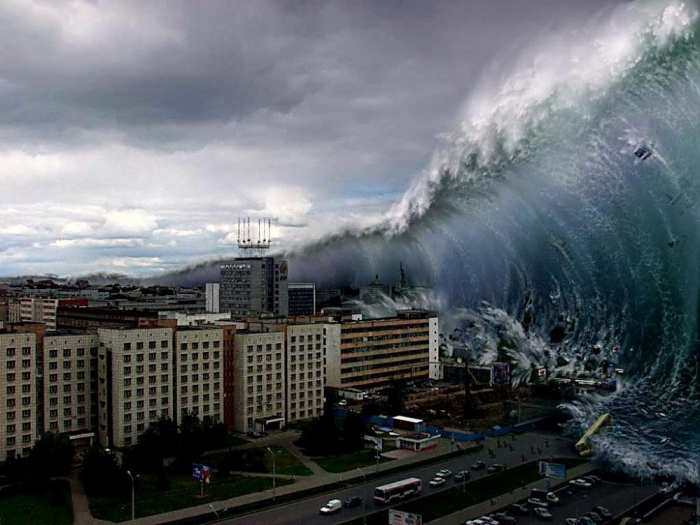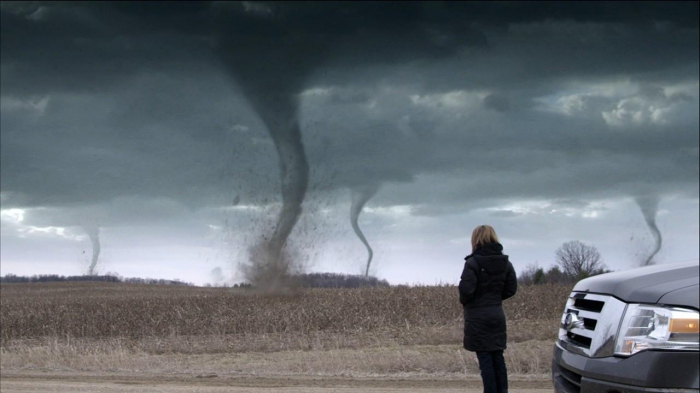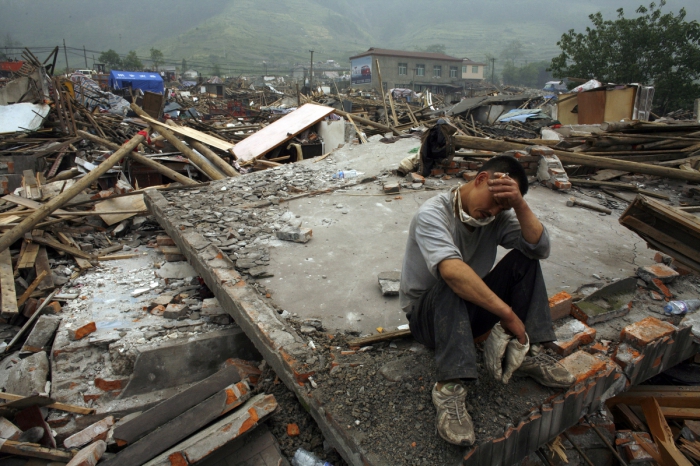Risks exist in any branch of human activity. Modern researchers divide them into several groups, but prefer to consider this phenomenon using an integrated approach to it. In this article we will consider the types of risks, we will decipher some concepts.
Mathematical background
 The theory of probability and large numbers is the main basis of the mathematical approach to the precise definition of risks. Any event of this kind is either unfavorable or strictly negative for production, as it can happen at any moment, and its consequences are poorly predicted. It is important to remember that all existing types of risk consider only the very possibility of any problems.
The theory of probability and large numbers is the main basis of the mathematical approach to the precise definition of risks. Any event of this kind is either unfavorable or strictly negative for production, as it can happen at any moment, and its consequences are poorly predicted. It is important to remember that all existing types of risk consider only the very possibility of any problems.
Features of insurance risks
It is this possibility that provides for the desire to cover theoretical losses and leads to the development of a huge market for insurance services. The difficulty is that the risks are manifested in incredibly diverse forms, the severity and frequency of their occurrence are different, and therefore it is almost impossible to completely eliminate them. The most common type of insurance. This risk can be estimated from a theoretical point of view, specialists can accurately determine its consequences and the amount of losses incurred. Here are the criteria that apply only to the insurance variety:
- The risk that is included in the liability of the insurance agent should include the physically feasible amount of compensation.
- The likelihood of such a situation should be truly random. Simply put, the object in relation to which insurance is applied must in no case be exposed to obvious or hidden danger, which may be known either to the insurer or to the owner of this object itself. The parties to the contract may not be previously aware of the place and time of occurrence of the risk.
- Randomness should manifest itself even in the case of many homogeneous objects. To obtain such data, it is necessary to organize statistical monitoring, when analyzing information from which it is possible to identify an adequate amount of insurance compensation. The fact is that only information obtained from constant observations is able to give visual dynamics of the possibility of risks.
- Of course, the fact of the occurrence of risk and real consequences cannot lead to the benefit of the insured or other interested parties. In no case should those insurance cases in which the self-serving intention of the person concerned is obvious be taken.
- An insurance event should not occur at a specific time and place.
- The consequences cannot be catastrophic, capturing the interests of many people and companies.
- The theoretical consequences of the risk could be realistically assessed and specific figures deduced. Otherwise, litigation may drag on for years.
What is risk?
 Most often, “risk” refers to the following factors:
Most often, “risk” refers to the following factors:
- Some theoretically possible danger that may threaten the object insured earlier.
- The theoretical possibility of the occurrence of the so-called insured event, that is, an event that is expressly stated in the insurance contract.
- A certain event or their complex, at the time of which the bank must pay the affected party the agreed amount.
- Contribution, building or other material object that is at risk.
- The amount of theoretically possible losses that arise due to the action of certain forces or people.
The action of natural, unpredictable forces
In general, there are two large groups of risks: those associated with the action of natural, unpredictable forces, and those that are caused by the directed activity of groups of people or even one person. Factors of natural origin are understood as natural, unpredictable phenomena, the consequences and time of which cannot be precisely and unambiguously determined. Most often, such factors are characterized by a considerable possibility of the appearance of human casualties and a very large material loss. These phenomena include: tornadoes, tsunamis, earthquakes, mudflows and avalanches, and other similar manifestations of the elemental forces of nature.
 If we talk about human activities, then the negative factors include: theft and robbery, acts of vandalism and extortion, as well as other illegal actions. What other types of risk exist?
If we talk about human activities, then the negative factors include: theft and robbery, acts of vandalism and extortion, as well as other illegal actions. What other types of risk exist?
Scope of Responsibility
In this aspect, they are individual and universal. An individual can be considered a liability agreement concluded between the bank and its major client in respect of insurance of a particularly large deposit or the contents of the cell, which can be of great value. Accordingly, universal documents can be understood as standard documents in the same financial institution, providing for insurance of standard deposits. Thus, the types of banking risks can only be divided into two types, which greatly simplifies their perception and analysis.
Anomalies
Abnormal and catastrophic species should always be distinguished in a separate category. The first variety is implied in those cases when the material object itself, due to some unique features, cannot be assigned to any of the standard categories. It should not be considered that the likelihood of problems in this case is higher than usual: it happens that the abnormal risks are much lower than those assumed for normal objects. It is extremely important to assess these types of economic risks in advance, determining the theoretically possible amount of damage: insurance companies receive grounds for concluding (or not concluding) an agreement, while builders or engineers decide to erect a building or other structure or refuse this project in the power of possible catastrophic consequences.
About catastrophic risks
When discussing types of risk, one cannot fail to talk about their catastrophic variety. This category implies the action of some special forces, as a result of the “work” of which enormous material damage is formed and a large number of persons are damaged. In general, almost all types of catastrophic risks can be attributed to natural factors, with the exception of cases when human activity leads to a significant transformation of the environment and its unsuitability for further exploitation.
 To date, it is generally accepted that this category is divided into two varieties:
To date, it is generally accepted that this category is divided into two varieties:
- Local factors that are relevant only in a particular area due to, for example, its meteorological characteristics and unstable climate.
- Oddly enough, but even the types of banking risks include reclamation factors. However, this is understandable, since with poor soil quality the borrower will not be able to get a good crop, as a result of which the debt to the credit institution will not be repaid.
If we consider the types of investment risks, then it will not work out especially to divide them, since they all have a human nature. Simply put, there are two varieties of them: objective and subjective. In this case, “objective” risks are understood as situations when a person or organization is really unable to fulfill the terms of the contract due to some factors, the occurrence of which can be predicted.Accordingly, “subjective” can be considered those cases when the enterprise in which the funds are invested is stable and successful, but the investor himself does not like the identity of its owner, as he is biased by some personal beliefs. Also, the types of investment risks include military and political factors that can play a decisive role in making or not making a profit for the investor.
Be that as it may, in the work it is extremely important to get rid of the subjective approach. Only objective risks are really important, since their probability can be expressed in the form of tables and diagrams, to predict the possible time of their occurrence and to protect yourself in advance. They do not depend on the will and consciousness of man, and therefore are true, material manifestations. In the case of subjectivity, the influence and role of the environment is simply not taken into account, which is very dangerous. Subjective types of enterprise risks arise due to poor, insufficient study of the problem, as well as due to the low qualities of a person standing in a responsible position.
General classification
 And now let's talk about the main, basic classification of all factors of this kind: those arising from transport and environmental problems, a special category and political troubles, problems in the technical sphere and responsibility. Let's look at each variety in a little more detail:
And now let's talk about the main, basic classification of all factors of this kind: those arising from transport and environmental problems, a special category and political troubles, problems in the technical sphere and responsibility. Let's look at each variety in a little more detail:
- As you might guess, the environmental risks of the enterprise are associated with transformative human activities and are caused by environmental degradation. As a rule, banking organizations or insurers do not affect this category in relation to the enterprise. However, in combination with certain political traditions in a particular country, with the slightest excess of the MPC of toxic substances in the emissions of the plant, it can be completely stopped and its funds seized.
- Considering the types of entrepreneurial risks, one can not help but talk about the transport variety. It will include hull and cargo. In the first case, the legislative necessity of insurance of all types of land, air and sea (river) transport, which is used during the implementation of entrepreneurial activity, is understood. Accordingly, “cargo” refers to the need to insure all types of cargo that can be transported using this transport.
- Repressive risks, they are political, are associated with an unfavorable situation in the country. These are very frequent types of entrepreneurial risks, as often businessmen in any state have to deal with the actions of the authorities, which contradict some international law. In all cases, losses are incurred by entrepreneurs and ordinary citizens in whose territory the hostilities are ongoing. It is important to note that international law provides for compulsory coverage of such losses, but judicial procedures can drag on for years.
- Special types of financial risks are very important. They imply consequences that may lie in wait for a carrier of particularly valuable goods, including some financial papers or world-famous art objects. In this case, all possible (even theoretically) risks are agreed in advance and entered into the contract, on the basis of which the activities for the transportation of such goods are carried out.
- Technical variety. Under the technical understand the risks that can occur at any enterprise due to an accident or breakdown of some equipment. This type of insurance is not at all loved by insurers, since it is very difficult to mathematically evaluate the probability of a breakdown. In addition, the cause of these problems can be not only metal fatigue and commonplace wear and tear of machines, but also the human factor, which in most cases cannot be predicted.This category is dangerous in that as a result of a malfunction or an accident, production can cause very significant damage, the size of which may simply not be provided for by compensation payments.
Types of technical risks
Given the danger of the latter category, researchers prefer to divide it into several additional types (so are the types of credit risks):
- In case of industrial risks, we are talking about machinery and equipment.
- The construction type includes the operation of all buildings and other engineering structures.
- Electrical risks - complex equipment, wiring, separate power cables under high voltage.
- Accordingly, the transport category implies some problems that may arise during the operation of any type of vehicle on the balance sheet of the enterprise or in the ownership of a citizen.
Enlarged classification
Risks can also be preventable and unavoidable. The preventable ones can be evaluated and “weighed”, more or less accurately predicting their possible consequences. This category mainly includes human activity and its consequences: negligence, lack of professionalism, theft and robbery. Accordingly, some natural disasters, as well as wars or uprisings (if we talk about human activities) are considered to be inevitable. In the case of avoidable, predictable risks, the same insurance companies are much more willing to take on possible liability for damages. Many prefer not to face the consequences of an inevitable category, since unrealistic amounts of money may be required to compensate for the risks in this case.
Private and industrial risks
There are massive (private) and large risks. The former are observed in relation to ordinary citizens and are often quite small, insignificant in general consideration. Major risks rarely arise in this area, without considering cases of cultural heritage items held by some collectors. Basically, these problems are characteristic of large industrial enterprises, where any negative environmental factor or the targeted activity of interested parties can lead to extremely large losses.
It is important to remember that the fundamental "basis" in all these cases is only one circumstance. What is this about? The fact is that the nature and types of risks can be divided into only two types: those where damage is caused to health and leads to death of people, and those that involve only material damage. Thus, industrial activity can involve not only major damage, but also disasters comparable to the consequences of major natural disasters. If we consider the foreign journalism of relevant topics, we can see that the concept and types of risk, which are understood as "large", are almost identical to "industrial".
What exactly is meant by large risks?
And now we’ll deal a little with a more private concept. What are, for example, large types of insurance risks? These are the varieties that cause the occurrence of such significant financial losses that cannot be covered by the volume of the insurance portfolio or stabilization fund of a particular enterprise or company. In particular, this is the situation in the space industry, where the price of one mistake is billions of direct losses and lost investments. On the contrary, in case of massive risks, the insurer or company can easily cover the amount of damage received by an object or citizen without resorting to borrowed funds or state assistance. Of course, isolated, particular cases are important. When considering them, a private, individual approach is important.
Liability risks
This factor is due to legally valid claims that other organizations or citizens may bring to the enterprise or individual. This is often found, for example, when operating equipment with increased noise levels or as a source of potential danger. Such cases include activities in the aerospace industry, the operation of aircraft or ships. These types of financial risks are dangerous because lawsuits can drag on for years, taking a huge amount of time and money. It is not surprising that many prefer to protect themselves from this danger by shifting the risk of liability to the insurer.
Incidentally, we have not yet examined in detail precisely the latter category. More precisely, the insurers themselves and the main types of risks that arise during their activities. But there are very, very many of them!
Insured events
Firstly, it is extremely important for insurance organizations to identify the probability of occurrence of an insured event in time and space. Otherwise, the danger and, accordingly, the value of theoretically possible losses can grow several times. Simply put, by and large, the concept of “types of risks in insurance” simply does not exist. There is only one species called the "technical risk of the insurer." By the way, the presence of such forces insurance organizations to actively invest in fire fighting measures, and forces them to fight for the introduction of new safety standards in technology and in enterprises.
All this happens opaque to citizens who are interested parties. From a legal point of view, the situation is very mixed, but this state of affairs has existed for a very long time around the world. It should be noted that the insured event itself is not an insured object in any way. In the role of such an object are all types and risk factors.
findings
Thus, all the cases considered by us occur under the influence of a chain of accidents and forces that are not subject to man. It is for this reason that risks are extremely difficult to predict and prevent.
But here there is a simple pattern. Suppose that there are several objects at once, equally exposed to the same adverse environmental factor. Suppose that it will be an engine (more precisely, a set of parts that form it). Theoretically, a situation is possible when only one of them is broken. If, after some time, the breakdown touched another part, we can safely assume the increased likelihood of a complete failure of a node or the entire motor. Of course, in practice it is extremely rare to predict the onset of a negative event based on the observation of only one factor.
 This is a consequence of the theory of probability: the closer the number of objects of observation to infinity, the more reliable will be the results of research. Of course, a person is not exactly able to fulfill this condition. Unreliable during observation can only be recognized as such a condition, the presence of which cannot be verified in practice, or generally unknown to other observers based on the results of a sufficiently long time period. So we examined the risky types. The degree of risk is the higher, the more objects are involved in simultaneous interaction with each other, involving additional forces and factors in this process, the impact of which is difficult to predict.
This is a consequence of the theory of probability: the closer the number of objects of observation to infinity, the more reliable will be the results of research. Of course, a person is not exactly able to fulfill this condition. Unreliable during observation can only be recognized as such a condition, the presence of which cannot be verified in practice, or generally unknown to other observers based on the results of a sufficiently long time period. So we examined the risky types. The degree of risk is the higher, the more objects are involved in simultaneous interaction with each other, involving additional forces and factors in this process, the impact of which is difficult to predict.

